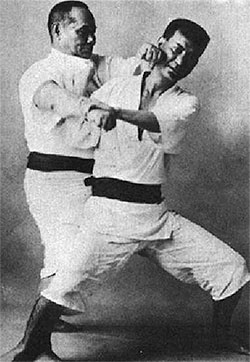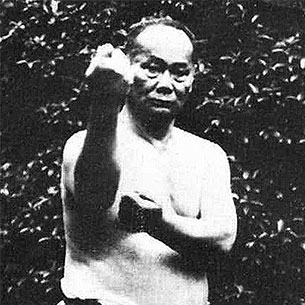There are a lot of opinions of whether Kata (or forms) and traditional martial arts are worth practicing… particularly these days with the MMA, Muay Thai, BJJ and other combat sports taking the limelight.
Many are in the camp of thinking that traditional martial arts training, and particularly Kata training (Kata = forms or patterns used in traditional martial arts) is a complete waste of time and training should be spent on more functional drills and sparring; while others feel Kata training is the “soul” of their art and perform their kata because it’s part of their heritage without a clear understanding of the meaning of the movements.
 Kata can be considered entire protection arts in and of themselves and contain important self-preservation techniques and principles of said style. It has been said that the masters of old studied one kata for a minimum of 3 years).
Kata can be considered entire protection arts in and of themselves and contain important self-preservation techniques and principles of said style. It has been said that the masters of old studied one kata for a minimum of 3 years).
It is however important to distinguish the difference between the civilian self-defense system (which is Karate) and fighting (dueling).
Choki Motobu, a famous Okinawan Kenpo master who helped popularize Karate in Japan, was known to have said:
The applications of kata have their limits and one must come to understand this.
The techniques of kata were never developed to be used against a professional fighter, in an arena or on the battlefield.
They were, however, most effective against someone who had no idea of the strategy being used to counter their aggressive behavior.
In other words, Karate was not designed for fighting a duel (in a ring / cage or what not). It was specifically designed to be a civilian method of self-preservation (close quarter combat) against perpetrators who are not prepared for retaliation by a skilled Karate practitioner.
(This does not mean the same thing as the attacker being an “untrained” fighter. Rather that the attacker is not prepared and/or is ‘untrained’ in YOUR fighting style)
Karate and Self-Defense
So according to Mr. Motobu, Karate is supposed to be a a method of self-preservation.
And it is to be understood by the writing (and teachings) of many of the old masters that Kata is a catalogue of self-defense applications…
So why is it that Kata is frowned upon by so many martial artists?
There are many reasons… but a lot of it seems to revolve around the practice of doing choreographed patterns (kata).
In traditional Karate, there’s a term called “bunkai”.
 Bunkai literally means “analysis” or “disassembly”, and in the reference to kata it means to disassemble the kata.
Bunkai literally means “analysis” or “disassembly”, and in the reference to kata it means to disassemble the kata.
The breakdown of kata is quite complex and looking at the movements via a simple and superficial analysis is a mistake. This is because the obvious movements in a kata are typically NOT the intended action / movement of the kata, and it requires you to deconstruct each of the movements to fully understand it.
Even what appears to be a simple block is typically not what it seem to be. It usually involves grabbing, manipulation and striking…
Each kata can be considered an alphabet of motion and each of the movements can be considered a letter in the alphabet.
By deconstructing each of these movements and re-arranging them, you can start constructing small words and sentences
You can also insert movements from other kata as well, although this can not be done at random (because you could end up “spelling” nonsense).
Once understood, these are worked with a partner against progressive resistance.
So, one could say that kata is there to teach things like:
- natural strength
- realistic timing
- balance
- speed of movement
- accuracy
- proper body positioning / distancing
- body control
- use both sides of the body equally
- study of self-preservation techniques
Choki Motobu explained that:
In spite of a street encounter never being the same, the principles of the kata never vary. One must know how they are applied and how to bend with the winds of adversity.
However, while proper kata training is important it is only one aspect of ones training in traditional karate.
Along with kata training, a Karate practitioner ought to also consider things such as:
- positioning (tai sabaki) and footwork
- body conditioning drills (hojo undo / makiwara training etc),
- grappling techniques (torite)
- study of anatomy
- flow / sensitivity drills (kakie / tegumi),
- kiko (qigong),
- study of kyusho (vital points)
- study of healing
- sparring (using the self-preservation techniques you’ve learned)
Here’s a short demonstration of Kyusho and Torite by the late Taika Seiyu Oyata of Ryute (Ryukyu Kempo) – he is credited as of the individuals who brought authentic old-school karate applications, Kyusho and Tuite (Torite), to North America.
As you explore each of these aspects of training, one will find that Karate can be a very complete system of civilian self-defense.
I will end with one last quote by Choki Motobu:
Nothing is more harmful to the world than a martial art that is not effective in actual self-defense.
